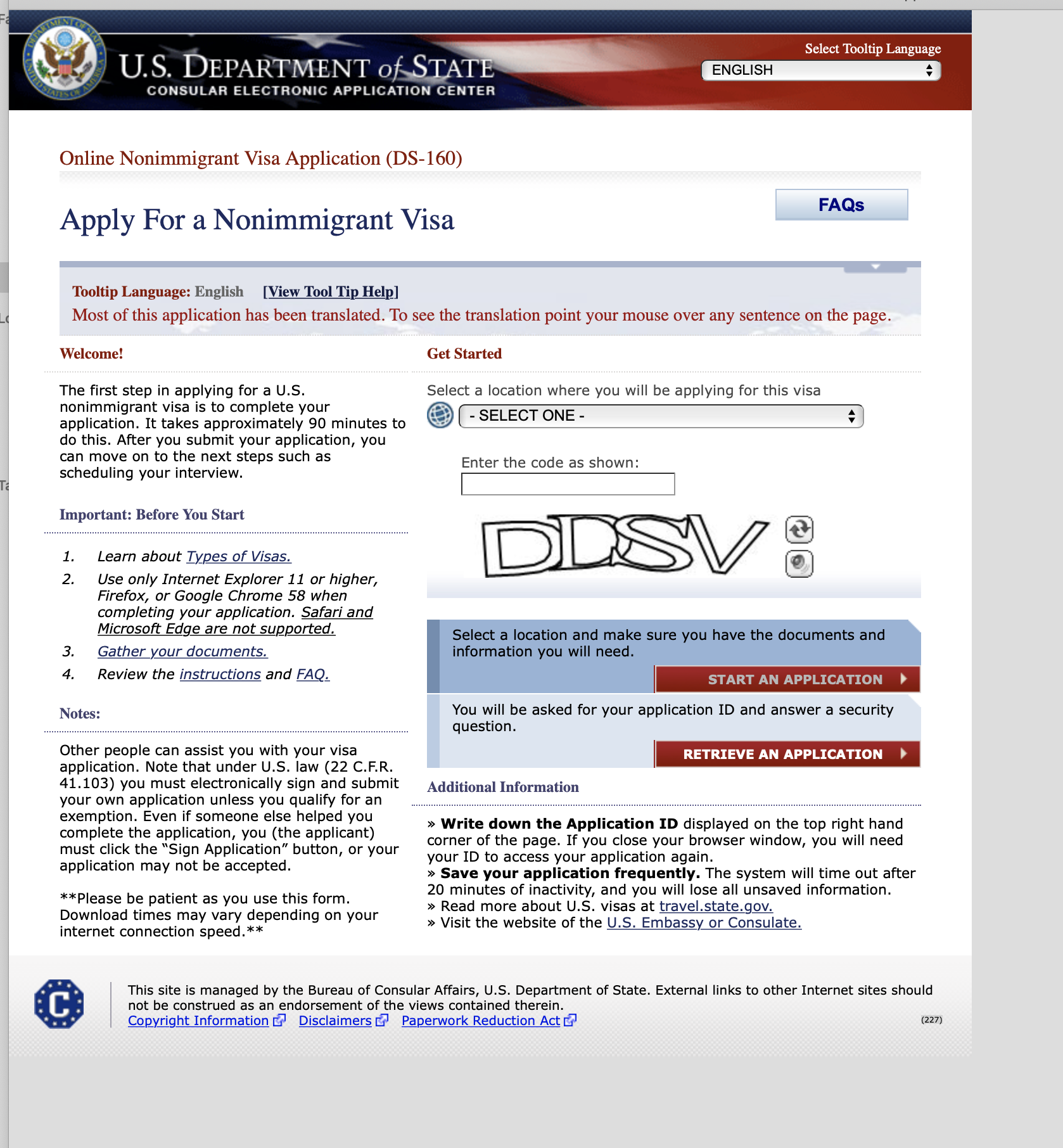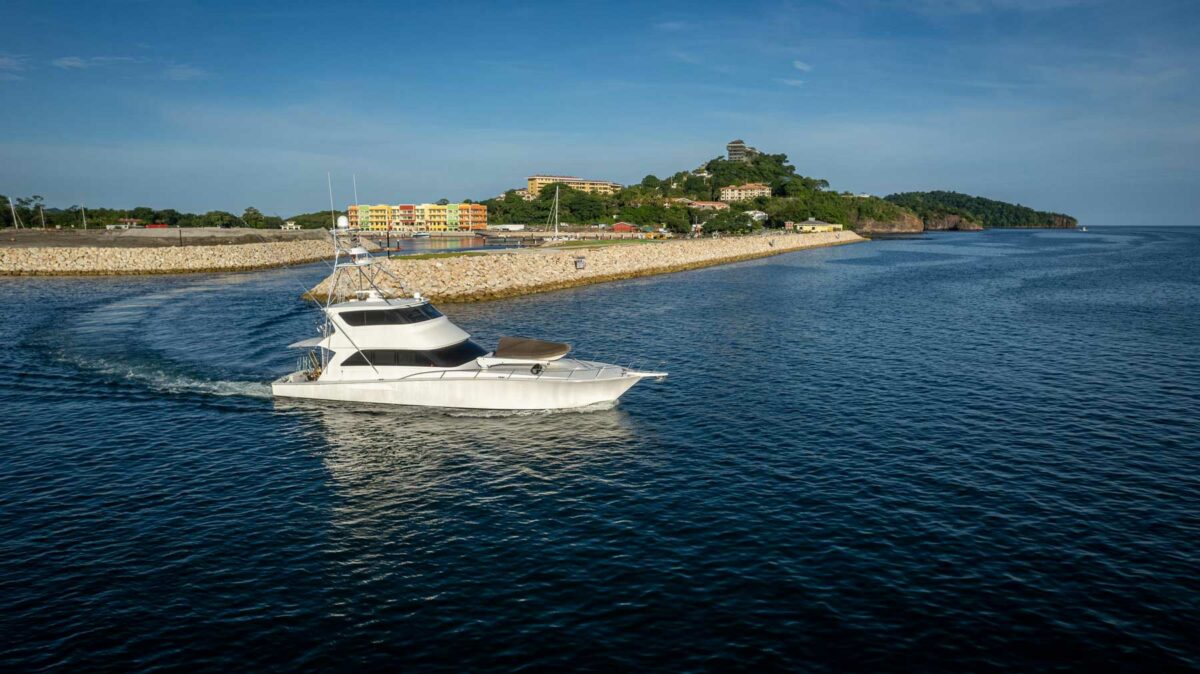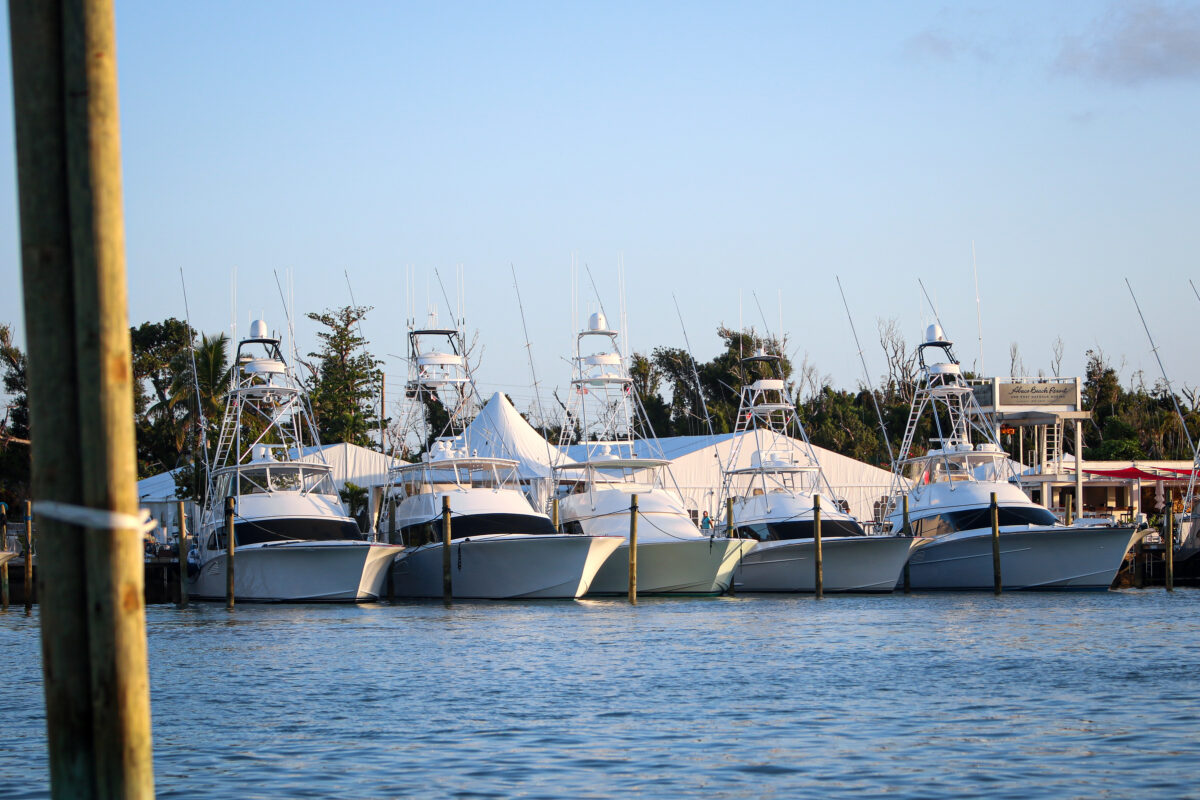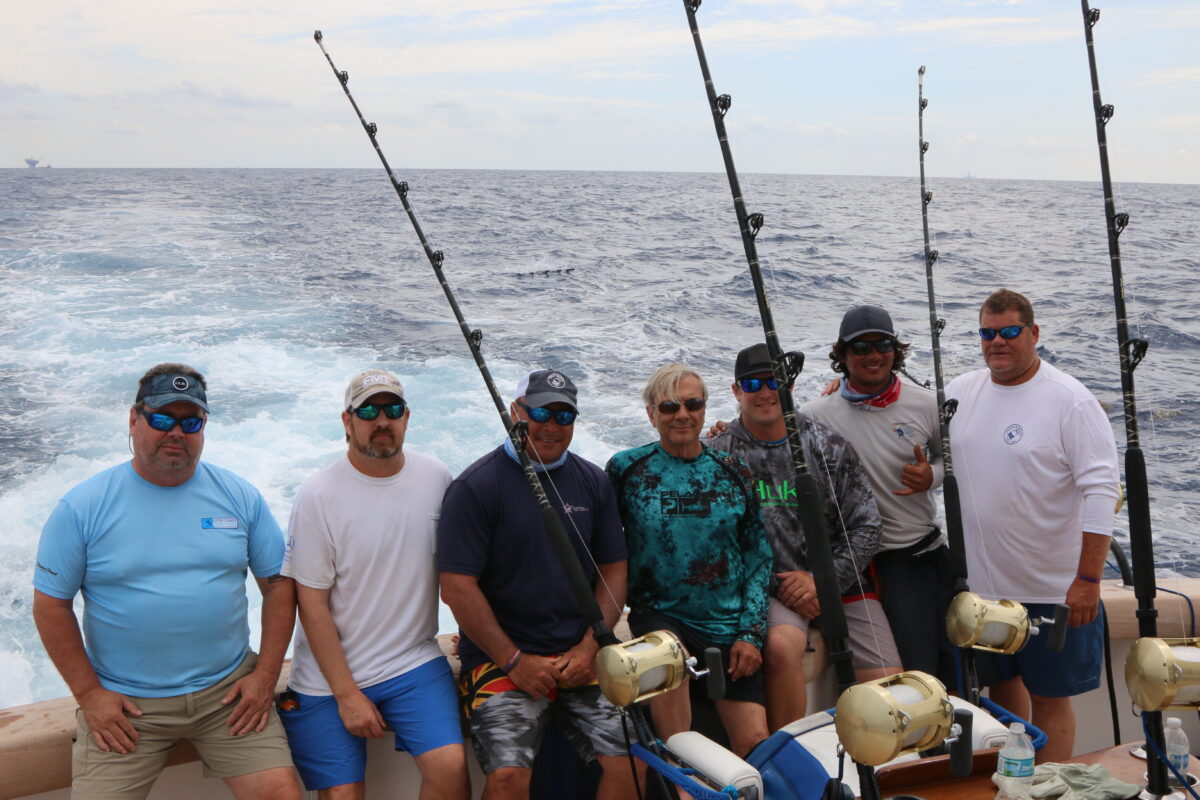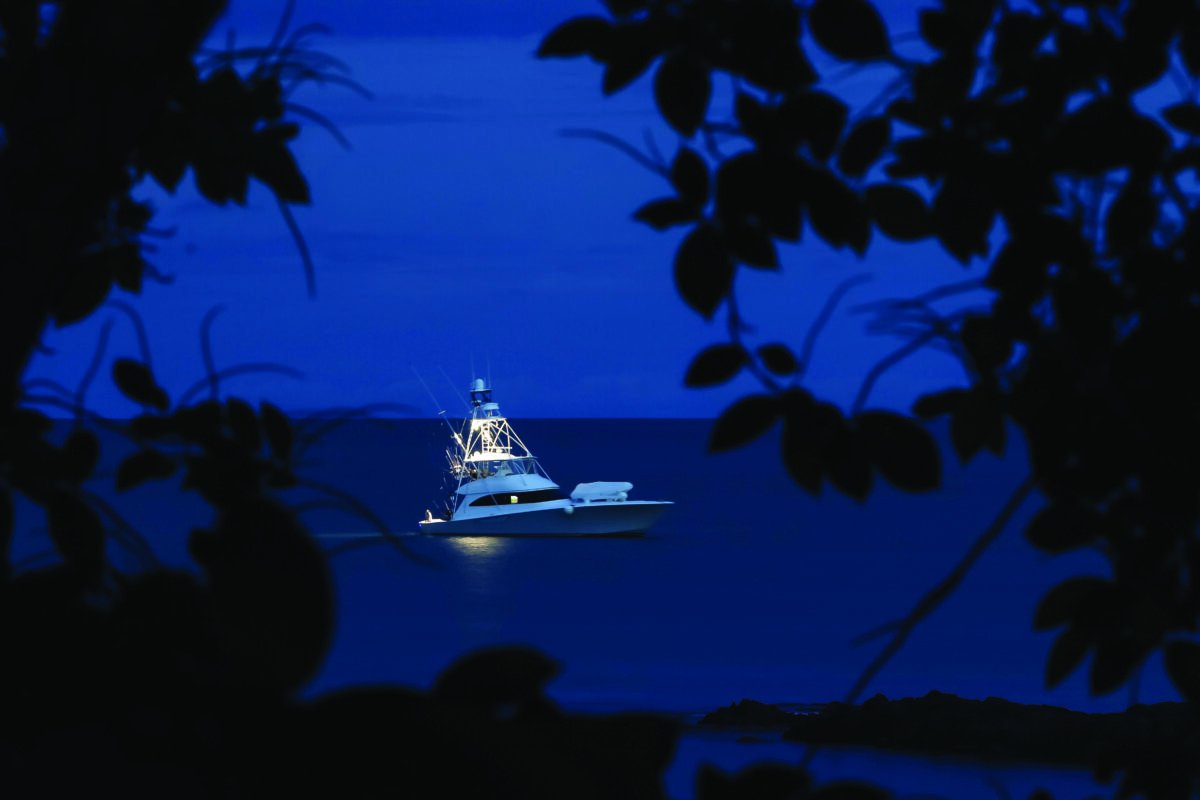I’ll have to admit, my only experience dealing with an embassy was when I left the rental car unlocked outside of Jaco and someone stole my passport and wallet. It was my second to last day of the trip, and I had to rush to the United States Embassy in San José to be issued an emergency passport so I could get home. I always assumed that an embassy looked very professional, and I would be dealing with someone in a large, stately office. That was definitely not the case; it was more akin to going to a bank teller. The only advantage was that as an American I got to skip all the lines, so I uneventfully proceeded to obtain my new passport.
The one thing that stuck out was all the non-Americans waiting in various lines attempting to attain a visa or some mechanism to allow them entry into the United States. Covid withstanding, the ease of travel and the worldwide sportfishing talent has allowed our sport to truly become a global affair. Walk the docks at any of the big money tournaments across the East Coast or Gulf of Mexico and you will find a plethora of foreign mates, captains and anglers.
What Is a Foreigner To Do?
So the question is, how do foreigners gain legal entry into the United States, can they work on U.S.-flagged boats and what are some problems that can be avoided to prevent the boat, owner or captain from being in a difficult situation or stuck in a particular location?
Currently, the U.S. Visa Waiver Program (VWP) enables citizens of 39 select countries to travel to the United States for tourism or business for stays of 90 days or less without obtaining a formal visa. In return, those 39 countries must permit U.S. citizens to travel to their countries for a similar length of time without a visa for business or tourism purposes. Australia and New Zealand are on the list, but there are no countries in Central America or the Caribbean included. In addition to a few other requirements, you must have an e-passport with embedded electronic chip to use the VWP. The application fee is $14.00 USD.
If you are not eligible for VWP travel requirements, the United States Department of State affirms that a citizen of a foreign country who wishes to enter the United States must first obtain a visa, either a nonimmigrant visa for a temporary stay, or an immigrant visa for permanent residence. Visitor visas are nonimmigrant visas for persons who want to enter the United States temporarily for business (visa category B-1), for tourism (visa category B-2) or for a combination of both purposes (B-1/B-2).
Types of Visas
B1B2 Visas
There is no United States visa catered to fishermen or yachties, but the B1B2 is the most appropriate for crew working on private boats. Affixed to a page in your passport, the B1B2 allows for a maximum of 180 days per entry and generally provides a 10-year duration. It is very important to know the B1B2 visa is not a work permit and does not allow daywork. Being paid on a B1 visa from a U.S. bank account may create problems with obtaining or renewing a B1 visa in the future. Disregarding the rules could also expose yourself to deportation and a potential 10-year re-entry ban.
However, the relevant statutes and immigration agency guidance do not provide straightforward answers for whether an activity by a B1 business visitor is allowed under their application status, or whether it constitutes impermissible employment. According to the Foreign Affairs Manual Section 402.2-5(C)(4)(U), professional athletes, such as golfers and auto racers, who receive no salary or payment other than prize money for his or her participation in a tournament or sporting event have been found to fall within the parameters of the B1 classification.
K-1 and O-1 Visas
So it seems logical that a Guatemalan mate traveling to Ocean City to fish the White Marlin Open would qualify as appropriate business activity. Most foreign mates use the B1B2, but there are other avenues to gain a more permanent stay in the United States. One could go the route of the K-1 or fiancé visa, but another option is the O-1 visa, which is a classification of nonimmigrant temporary worker visa granted to an alien, “Who possesses extraordinary ability in the sciences, arts, education, business, or athletics who are in the United States to work for a sponsoring employer or organization.”
The O-1 visa is issued with an initial period of stay of three years, but it can be renewed in increments of one-year with no limit to how long you can stay as long as you have valid O-1 employment. These visas are considerably more difficult to obtain and the first requirement is to have a job offer or contract from an organization in the United States. Evidence of the highest level of expertise can be in the form of any three of the following: Receipt of national or international recognized awards, membership in associations of like-minded and accomplished individuals, citations in professional publications, acting as a judge of your peers, author of scholarly articles in trade journals, prior employment in similar positions, and/or prior extraordinary high salaries for services rendered.
Documentation
With some of the above documentation, you need a boat owner and job offer outlining duties, dates and locations. This is a great visa if you can get it; the problem is the difficulty in obtaining the documentation necessary to be successful, and the disposition of the official assigned to your case. I have spoken with a well-known and highly successful foreign captain from Australia. The process took him roughly four years and he had one denial. Although through temporary visas he was able to enter and exit the United States, he ultimately needed the O-1 visa to run the fishing operation. If you are looking to pursue an O-1 visa it is almost a certainty that you will need to hire a skilled immigration attorney to help process your case. The standard processing fee for an O1 visa is $460.
Dealing With Officials
Many captains and mates certainly display the highest level of expertise, but a major issue is that most folks have zero clue about this industry, let alone a federal employee cooped up in some office in New Hampshire or Wisconsin. No disrespect to government officials, but these immigration officers do not usually see situations that are outside the box. It is up to you, and your attorney, to properly educate them on your position, employment and credentials.
If you tell people you work on a fishing boat, I bet 80 percent of the time they think you are working on a shrimp boat! It is a difficult industry to comprehend if you have never been a part of the scene. Due to the greater prevalence of foreign individuals in the yachting industry, there are some educational pieces geared toward the superyacht crowd, although most of the immigration info can be applied to the traveling sportfisherman.
As thrilling a prospect as it is to jump on a boat in the United States, the logistics of it can be complicated and overwhelming. Customs and immigration are among the most daunting aspects of overseas travel and the coronavirus pandemic led to the suspension of many visa services. Large numbers of consulates have not been processing visas or accepting future appointments, resulting in extensive visa delays and backlogs.
The Interview Process
Speaking with individuals who have been through the process, there are some certainly helpful suggestions to minimize headaches and hold ups. Always try to obtain the visa in your home country, it can be difficult and additionally time consuming to get the visa in a third county. There have been several captains stranded in locations due to their United States paperwork being delayed or denied. Like I tell my clients in court or in depositions, tell the truth, but do not elaborate when you don’t have too. If the state department asks a question, just answer the question. For instance, it is best not to mention anything about charter trips or daywork. All they need to know is that you are employed on a boat, they do not need any additional details of your scope of employment if it may or may not deal with off-the-boat stuff.
Remember To Register
Some advice for boat owners, and those looking to be boat owners, pay attention to the registration of your vessel. It is essentially impossible for a United States flagged vessel to hire foreign crew. One of the greatest advantages of a foreign flagged vessel is its ability to employ talent from all over the world. There are great captains and crew outside of the United States, and by thoughtfully registering your vessel, you are not limiting yourself to where you can find skilled help. There are many other factors that go into vessel registration, and finding a qualified maritime attorney can assist in navigating those waters.
If you get in a bind with the state department, do not hesitate to ask for some help. If you have a relationship with the boat owner, see if he has any contacts such as a congressman or senator, or if he knows any immigration lawyers. On the flipside, United States citizens looking to fish abroad must comply with the rules and regulation of the host county.
Do Your Research
A quick Google search will often answer most basic work visa questions. Although I’ve never worked in Australia, a quick Google search for United States citizen working in Australia leads you to their visa options, one of which is Superyacht Crew. This explains what you need and links to required forms and fees. For example, one of the requirements is being a crew on a superyacht in Australia, but nowhere is a superyacht defined. This would be one of those situations where you do not need to volunteer extra information, such as that it’s a 65-foot Jarrett Bay instead of an 85-meter Lürssen.
Someone could write a book on the different visa options, requirements and applications throughout the world. With the ability for boats to travel all over the globe, it’s a good idea to follow the laws of the host country. When in doubt, ask for help, and leave yourself plenty of time for the paperwork process. Fishing is a lot more fun than having to turn around and go home!
Applying for a B1B2 Visa
- You need to fill out the application Form DS 160, which can be found here (or just Google DS 160 Visa application).
- Next, you need to schedule and appear in person for an interview at a United States Embassy or Consulate.
- Pay the non-refundable application fee. Remember to print the payment confirmation to take to your appointment. If your visa is approved, you may also need to pay a visa issuance fee to your nationality.
- Prepare your documents for the interview, including confirmation of application and payment, and a photo if you did not upload one. Bring anything you think may be useful. Remember that your passport must be valid at least six months beyond the length of your intended stay in the United States. An employment letter is very helpful, but U.S. officials are equally interested in proof that you will not overstay your welcome. This could include a bank account or mortgage from your home country, photos or wife and kids back home, car payment, water bill, etc.
